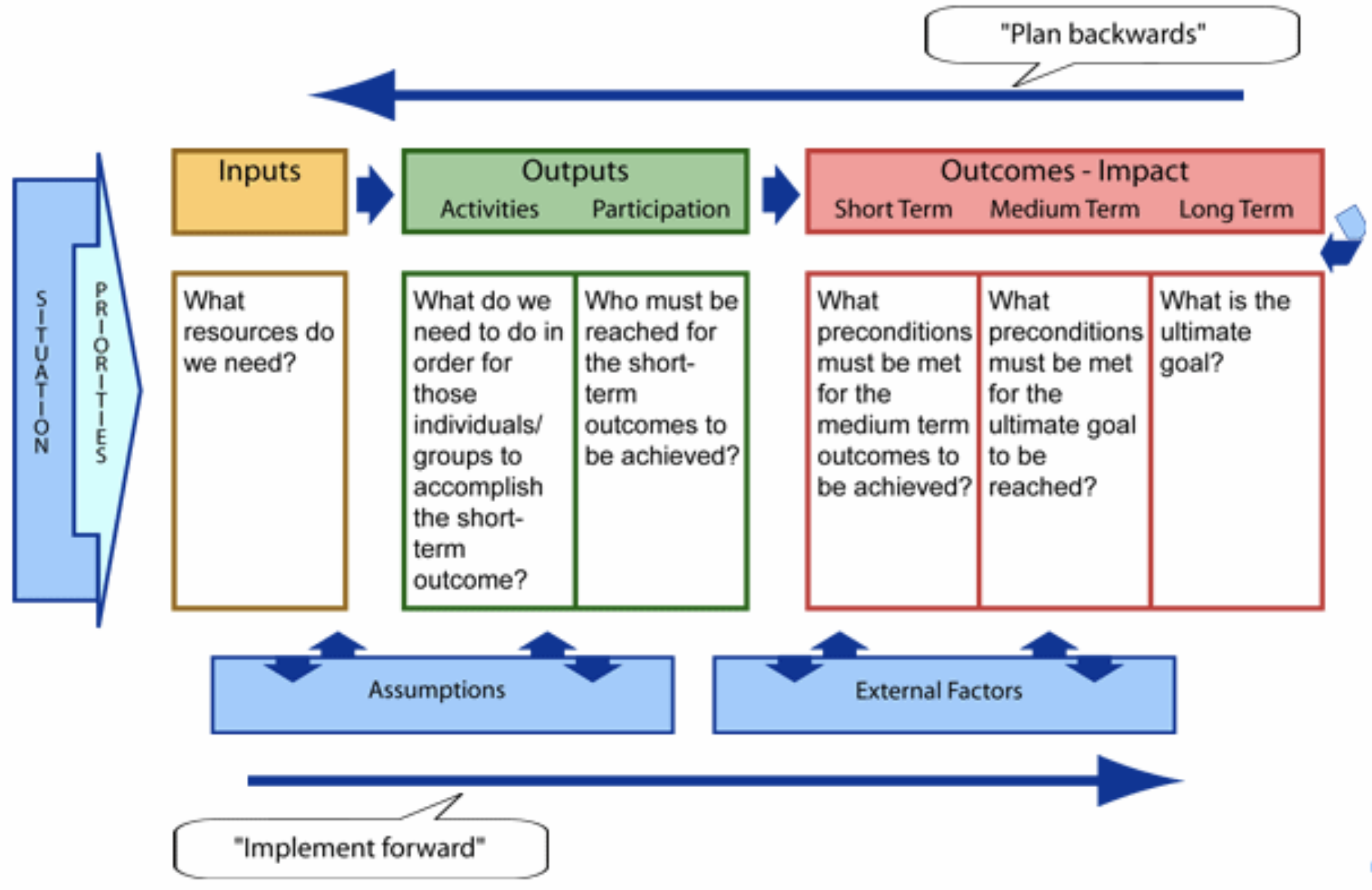This model can be used to help plan an extension program and provide the basis for evaluating it. Using the model, the relationships between the desired outcomes and the activities and inputs required to achieve them, can be worked out and illustrated in a Program Logic graphic.
It can be used to show what the program will do and how it will go about doing it. By showing the relationships, a road map for a program showing the steps required to reach a desired end result can be developed.
Program Logic can then be used to identify priorities and ensure the overall strategy is well thought through. Through the process the steps required to go from the current situation to the end outcomes are identified, then control points for monitoring and how and when evaluation is to take place, are identified.
In essence a program logic model lays out how a program is supposed to happen, that will result in achieving the key desired outcomes. The program logic should be based on sound thinking and be evidenced based, to increase the likelihood of reaching the desired outcomes.
The Program Logic Model is a good process for collaboration and engaging stakeholders who contribute in its production. Once complete, it is also a good communication tool. It can also be continuously improved overtime, if circumstances change.
The key to the approach is you plan a program logic model backwards from the ultimate desired outcome or impact and you then implement it forwards, using the inputs or resources to produce the required outputs that will deliver the desired outcomes
Steps to Completing a Program Logic
- You plan backwards. That is you very clearly define the ultimate long term outcome or impact that is required.
- You then identify what medium term outcomes are required in order to achieve the ultimate long term outcome. (i.e. In order to have outcome Z what outcomes must we first achieve, e.g. outcomes X and Y)
- You then identify what short term outcomes are required in order to achieve the medium terms ones, (i.e. In order to have outcomes X and Y, we must first achieve outcomes A, B, C, D and E)
- When identifying the short and medium term outcomes, assess whether there are any external factors that will influence them, or will be influenced when they are attained
- You then identify what outputs are required (Activities and Participation) in order to achieve the short term outcomes
- Finally the inputs are defined, the resources that are required to generate the required outputs
- When identifying outputs and inputs consider what assumptions there are in relation to them
- Analyse the current situation and any priorities that will influence the achievement of the desired outcomes

Source: University of Wisconsin Extension
To check your Program Logic Model
- Does the achievement of the short term and mid term outcomes, lead logically to the achievement of your ultimate outcome?
- Is your model logical, does it flow well either backwards or forwards, does it make sense? Are there any keys things missing?
- Is there evidence to suggest that your proposed activities will result in the desired outcomes? Is there logic to how your proposed activities are structured?
- Are the identified inputs and participants, sufficient to ensure your proposed activities will be successful?
Program Logic and Evaluation
The outcomes define what ultimately needs to be evaluated. They are what the key evaluation questions will be about. Bennett’s hierarchy is considered one of the forerunners of the program logic approach. It is also a good process to use when designing the evaluation of a program logic model.
Content sources and further information
Logic Models – Program Development and Evaluation. University of Wisconsin-Extension
